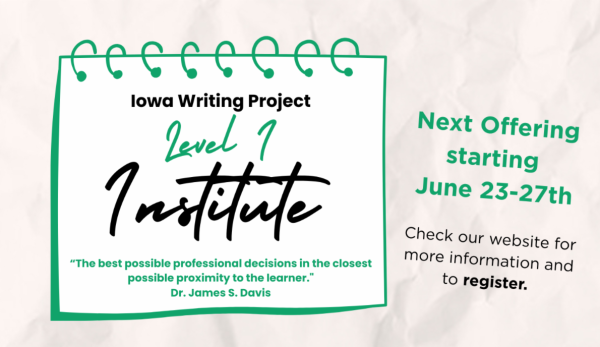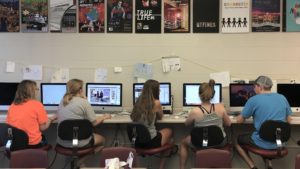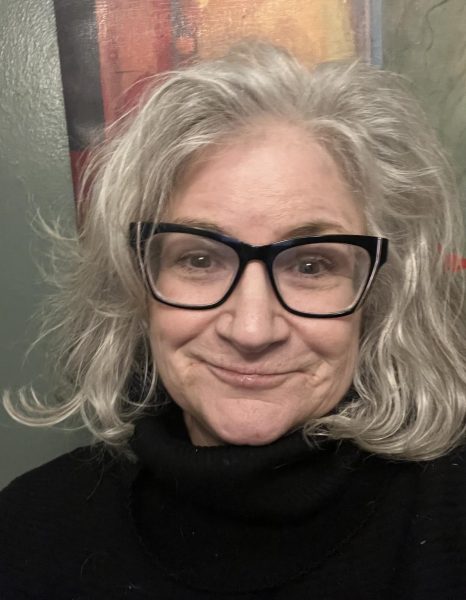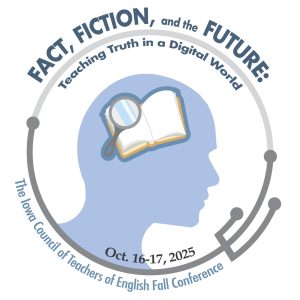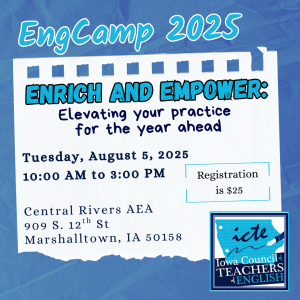The Oasis
We’re so far removed from the physical classroom at this point in time, but Brenna Griffin invites us to look back on what is usually the hardest part of the year: February.

April 16, 2020
“The desert is dry and hot,” the woman in the suit proclaims at the front of the library. It is my first year of teaching at Callanan Middle School. I am all wide eyes and optimism; plus, my self-selected mentor teacher has helped me set the expectation that I can always take away one good thing from any professional development experience. I am at the point in my career when the learning is coming so fast and hard that I can barely notice it happening.
“That’s how I start all my PD in February in middle schools,” she continues. “Kids are crazy and ate too much Valentine’s candy? That gray ice/mush is everywhere, and everyone has a little too much pent-up energy? You feel like you can’t get anything done on a Friday–not even ten uninterrupted minutes of instruction? Some kids are coming to school angry and hungry, and they can’t focus on your classes?”
I’m starting to wonder where this is going.
“Everything I just described IS teaching middle school in Des Moines in February. There. The desert is dry and hot. Don’t get on a plane to Arizona and complain about the dry heat. Don’t walk in the doors to this place and be surprised at the drama, the chaos, and the kids who are trying on different parts of themselves and failing along the way.”
The fact that she is so, so right, and somehow laughing in the trenches with us–keeps the cranky room of February teachers from throwing our pencils at her eyeballs. I don’t remember much of the rest of the message, but I do know that it became a mantra for me as an educator for a long time, and then faded into the memory bank along with the other platitudes. I wish I could give her credit, but I do not remember her name.
This month, though, the message resurfaced, fourteen years later, unexpectedly. In the interim, I’ve changed schools twice, borne witness to school cultures created and dismantled, taught students spanning seventh to twelfth grades, and contributed to the most and least functional of all the PLCs. I’ve tried to lead, in ways both appointed and rogue, and I’ve tried to follow, in ways both subversive and whole-hearted. Five years in, when I thought I wouldn’t make it another year, I finished my master’s research paper on teacher burn-out. I changed some things. Seven years in, after the birth of my first daughter, I changed some more.
I have often been willing to see the hot, dry desert in many of my students’ issues. But I have struggled to show the same grace to adults—and the system—for most years of my career. I’m working on it.
So this February, I offer a gift of the knowledge of the desert being dry and hot. Yes, our school is having systemic attendance issues. Yes, colleagues are acting like the world is ending as a result, and administrators have to remind us to tell students who missed class, “I’m glad you’re here” instead of “Where have you been?” Yes, the papers will never quit(unless we decide to make them—and let’s not forget we have at least some of that power). Yes, the sky is gray and it seems some days like the sun will never come back. Yes, that one guy on faculty thinks he has all the answers even though he hasn’t attended professional learning by choice in fifteen years. Somehow he is the loudest. Yes, the students struggle with commas. Yes, yes, yes. The desert is dry and hot.
I’m not saying that we shouldn’t try to make things better for our students and our buildings. We should. But inviting radical acceptance of some parts of our work lives can help us put energy into the parts we can actually change: the sequence of a lesson, warmly greeting students at the door, building in time for writing conferences instead of taking a pile of papers home to leave illegible comments in the margins. When we choose to solve what we can solve instead of what we can’t, we are using our gifts for good.
I saw a friend recently who left the English classroom to work as a special education teacher. He was a wonderful English teacher, but constantly felt hounded by the response load, plagued by the sense that he was always behind in the response cycle if he was simply living a normal life with his family. He said something to the effect of, “Without the guilt of the paper load, it’s much easier for me to go to work and feel like I’m just value-added. I can make a kid’s day better; I can help reteach something difficult for a kid to grasp. I’m not holding students back because they’re waiting for me to give them comments on their written work.”
This comment made me hold my breath. I’m glad he’s happier, but his articulation of finally feeling value-added made me sad. We don’t have to be perfect teachers to be value-added teachers for our students. The job is too much to do all of it well. We can still do so much of it well. I am convinced of this. So, until spring comes and we all actually feel better, let’s try a smaller and gentler approach of accepting what we cannot change–even celebrating it. The messiness of humanity is what makes our profession complicated and beautiful. In a hot, dry desert, we can still be water.


